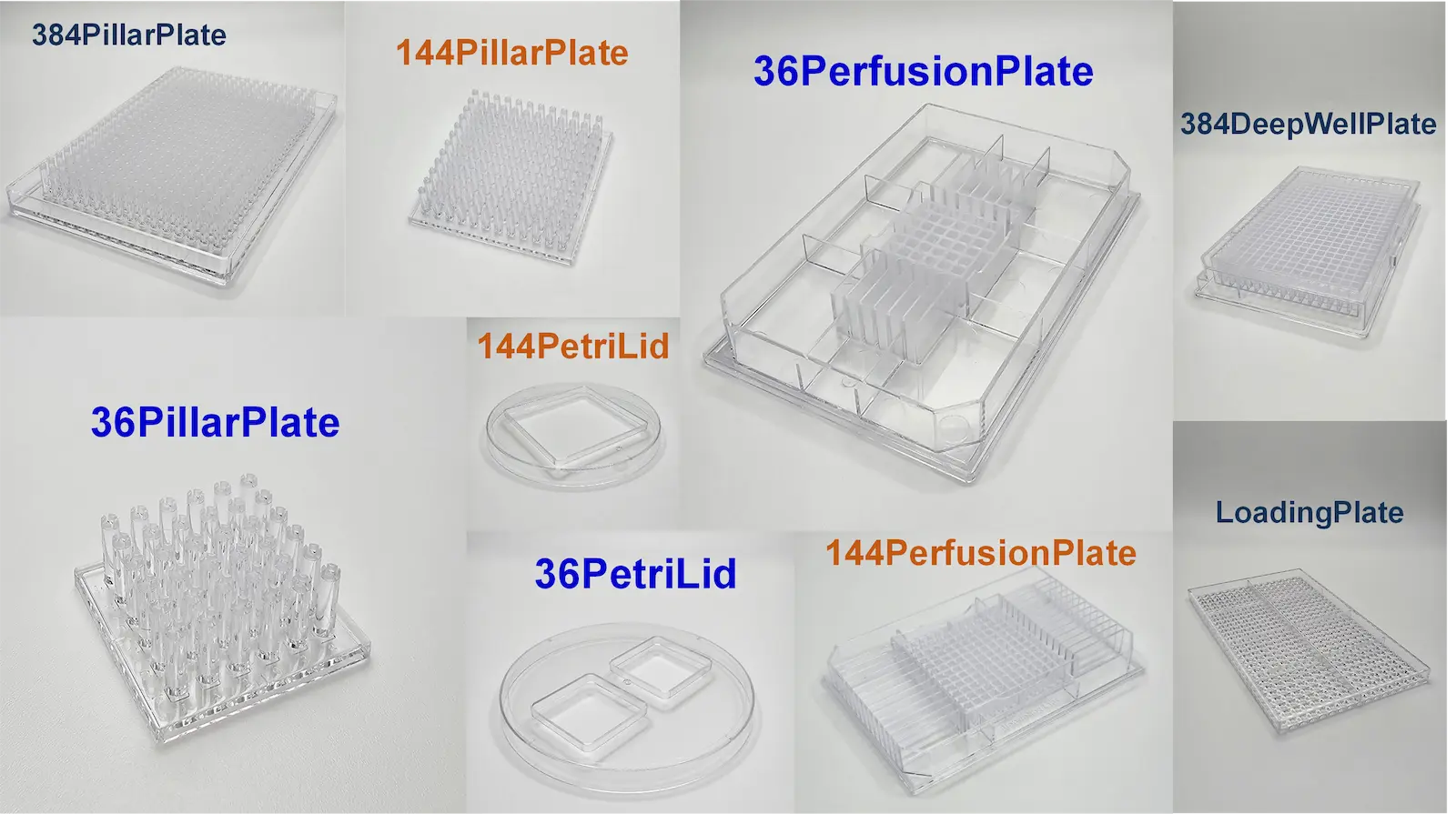Bioprinting Lab
Our research group has been developing “microarray 3D bioprinting”, which is a robotic, high-precision, cell printing technology manifested on a pillar/perfusion plate platform. In an effort to generate predictive toxicity/efficacy data in vitro, we have developed various pillar/perfusion plates for static and dynamic organoid cultures, cell/organoid printing protocols on pillar plates, gene editing of pluripotent stem cells for generating disease tissues, and high-content imaging assays with organoids in pillar/perfusion plates. Our ongoing research projects encompass (1) genetically engineered brain organoids for developmental neurotoxicity and autism modeling, (2) gene-edited liver organoids for predicting hepatotoxicity in different ethnic groups, (3) engineered alveolar organoids with virus sensors for predicting virus infectivity and lethality, and (4) dynamic liver tumor organoid and immune cell co-culture for personalized cancer therapy. The pillar/perfusion plates have been successfully commercialized by Bioprinting Laboratories Inc.
Central Theme of Our Research

Predictive compound screening via microarray 3D bioprinting of human organoids

Microarray 3D bioprinting technology and associated pillar and perfusion plate products for human organoid culture and analysis. Induced pluripotent stem cells (iPSCs) and spheroids suspended in biomimetic hydrogels can be printed on the pillar plate precisely with a 3D bioprinter. After hydrogel gelation, the pillar plate containing iPSCs can be sandwiched with a perfusion plate with differentiation and maturation media for dynamic culture of organoids. Bioprinted organoids can be tested with compounds, stained with fluorescent dyes and antibodies, and scanned with an automated fluorescence microscope for high-content imaging (HCI) of organoid functions as well as predictive assessment of compound toxicity.
Our Pillar/Perfusion Plates and Their Accessories for Static and Dynamic Cultures of 3D Cells and Organoids
